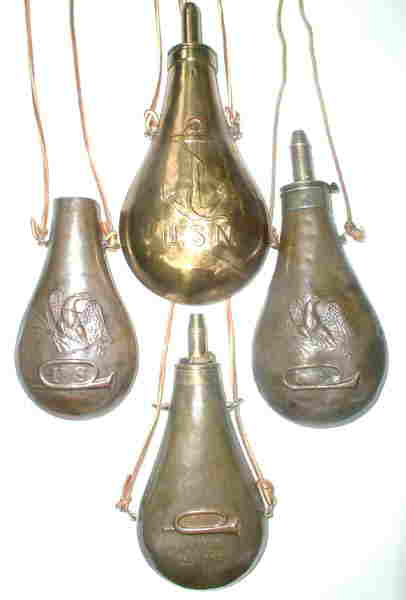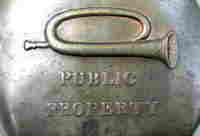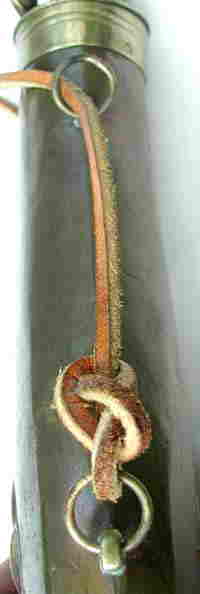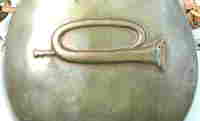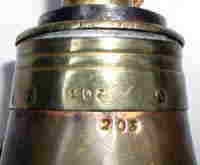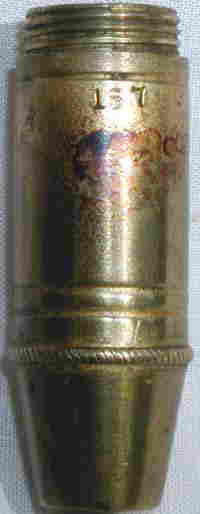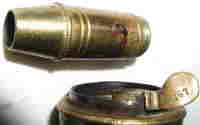|
Part 1 of 3
|
||||||||||
| From May 5 to May 14, 2000, the featured Collector's Item of the Week topic was 3 different examples of the U.S. Peace flask. This week we will be looking at the first of three and three-quarters of other U.S. military copper powder flasks. Their picture follows: | ||||||||||
|
|
||||||||||
| Top:
An 1845 dated "Fouled Anchor" U.S. Navy flask by Stimpson.
Center Left: A "topless" 1832 U.S. Rifleman's "Bugle Eagle" flask by Robert Dingee. Center Right: A complete 1833 dated U.S. Rifleman's "Bugle Eagle" flask by Robert Dingee. Bottom: An undated 1825 -27 U.S. Rifleman's "Public Property" flask.
|
||||||||||
|
|
||||||||||
|
Please note that the definitive work on Powder Flasks, of all types,
is Ray Riling's "The Powder Flask Book" published in 1953. It is a
magnificent tome and it is highly unlikely that it will ever be surpassed
in its breadth and study scope of powder flasks. Therefore, rather
than reinvent the wheel, I have paraphrased or repeated directly herein
some of his comments on the subject powder flasks. I pray to God that
I have done right by Mr. Riling and can only belatedly thank him for
the unbelievable effort he put into his book and the great and lasting
knowledge and benefits he passed on to the entire world.
|
||||||||||
|
|
||||||||||
|
With the exception of the "Fouled Anchor" U.S. Navy flask the official
U.S. government powder flasks were intended to be used only for issue
to Riflemen in the Regular Service and to Militia Units. They may,
of course, have been used irregularly with muskets. However, these
flasks, along with the Hall rifle flask manufactured at the Harper's
Ferry Arsenal and the later "Peace" flasks, were generally meant to
serve the Model 1803, 1814-20 U.S. flintlock rifle, the Model 1814
U.S. flintlock rifle, the Model 1817 flintlock "Common Rifle" and
the percussion conversions thereof plus the U.S. percussion rifle,
Model of 1841. The "Fouled Anchor" navy flask was originally manufactured
for use with the Jenks Navy Carbine and the Ames Boxlock single shot
pistol.
Going from the earliest to the latest, we will start with the James Baker:
|
||||||||||
|
|
||||||||||
|
The Federal Government has always had a difficult time keeping property from being "liberated" by our soldiers. This has been a given from the Continental flintlocks of 1776 to Colt .45 automatic pistols though WWI, WWII, Korea and after. To discourage draftees, volunteers and state militia from taking these flasks home with them, they were marked "PUBLIC PROPERTY" much like the markings of "UNITED STATES PROPERTY" on the Colt .45 automatic pistols of WWI, WWII and later.
|
||||||||||
|
This was the first contract between the Government and a contractor
for metal powder flasks. The March 17, 1825 contract calling for 2,000
flasks was awarded to James Baker of Philadelphia. Delivery was acknowledged
on March 3, 1827. The flasks had been shipped from Liverpool, England
on the ship Montzuma. Another 3,000 of the flasks were contracted
with Baker on November 7, 1827. Although their is no definite documentation
as to the description of these flasks, it has been generally held
that these flasks are those of the type and design known as the "Public
Property" flasks.
|
||||||||||
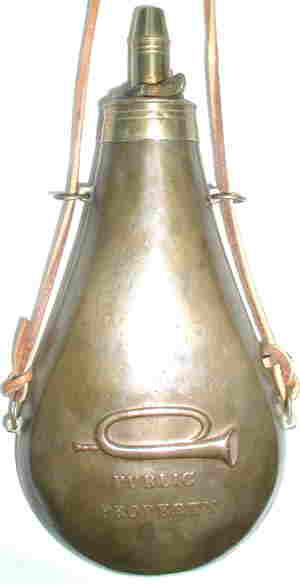
|
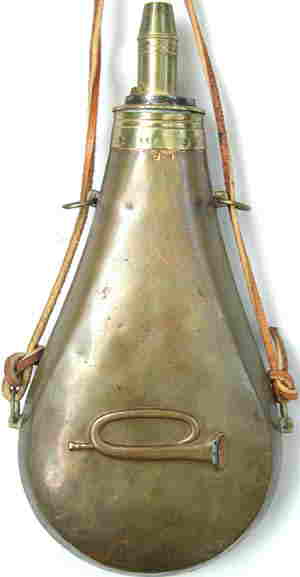
|
|||||||||
|
|
|
|||||||||
|
The approximate measurements of this flask are 8-7/8" overall including
the 1-7/16" non- adjustable spout. The width, at the bugle stamping,
is 4". The bugle stamping is 2-5/16" long by ¾" in height.
The inside bell measurement is ½". According to Riling, the
flask holds 8½ ounces of powder and the average weighing of
the charge from the non-adjustable spout contained only 65 grains.
An amount insufficient for the prescribed loads of the contemporary
arms.
|
||||||||||
|
There is every evidence that the "Public Property" flask was not of
American manufacture. The spout does not hold a full charge for the
weapons with which it is thought to have been used for. It has an
outside exposed spring and the top is not removable for the efficient
filling of the flask. It has to be loaded by removing the spout and
filling it through the spout hole while holding the cutoff open. The
lightly knurled top piece of the common or fast top has been seen,
by Riling, only on French and Belgium made flasks. The 4 carrying
rings are attached to studs showing a form different from that on
any American or British flasks. There are no inspector initials or
date on this flask. The only stampings are the numbers "203", on the
back, at the top of the body and on the collar plus the numbers "167"
on the base of the spout and on the thumb piece.
|
||||||||||
|
|
||||||||||
|
||||||||||
|
|
||||||||||
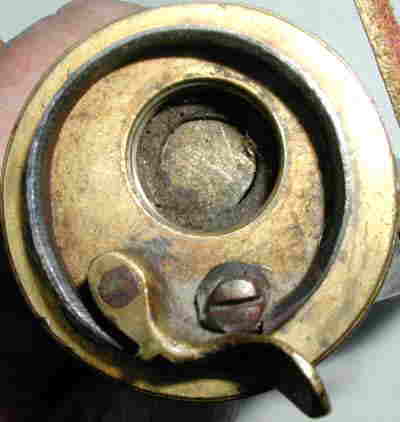
Top view of flask with spout removed showing exposed spring and spout hole
|
||||||||||
|
|
||||||||||
|
|
||||||||||
|
|
||||||||||
|
I hope that everyone likes this series on American military copper
powder flasks both in words and pictures. Full credit for the descriptions
used should be given to Ray Riling along with our deep gratitude for
his epic powder flask book. Once again, my thanks to Reed Radcliffe,
my son, the webmaster of this site.
Next Part 2 of 3 Dave Radcliffe
|
||||||||||
